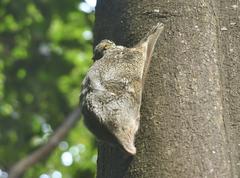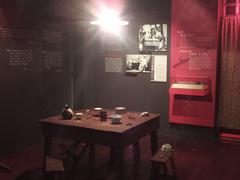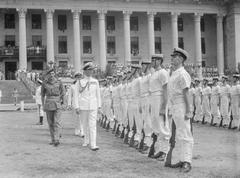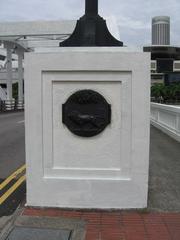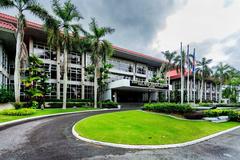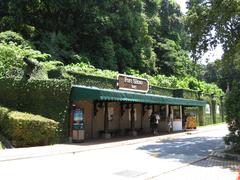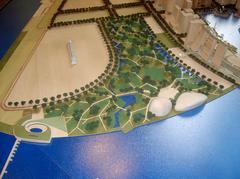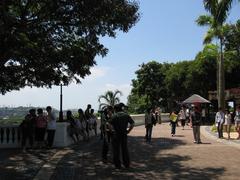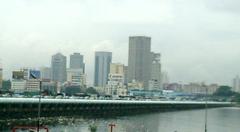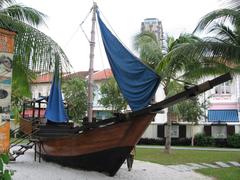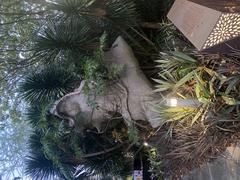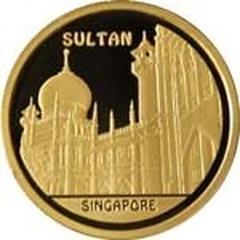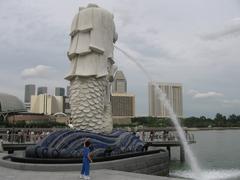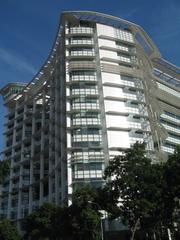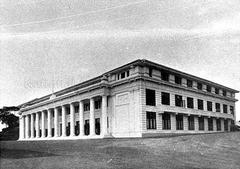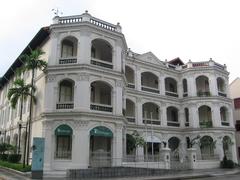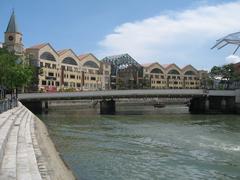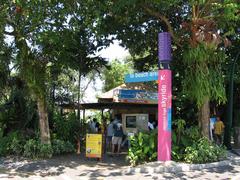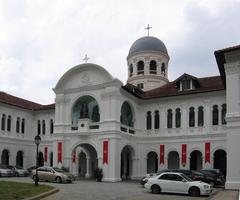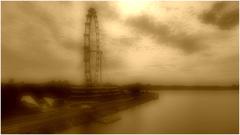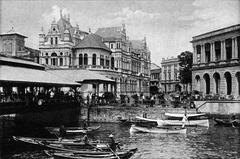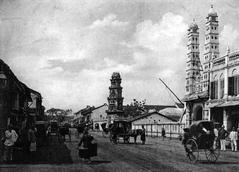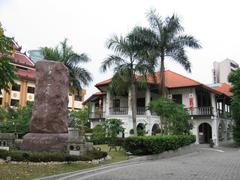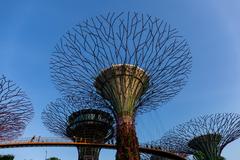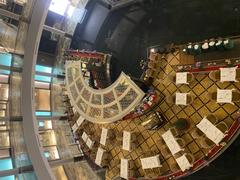Fort Tanjong Katong Visiting Hours, Tickets, and Guide to a Singapore Historical Site
Date: 04/07/2025
Introduction
Nestled in Katong Park, Singapore’s eastern region, Fort Tanjong Katong is a fascinating yet underappreciated historical site. Built in 1879 by the British to defend Singapore’s vital southern maritime approaches, the fort offers a rare window into the island’s colonial defense heritage (Katong.sg; Remember Singapore). Although its operational life was brief due to construction and logistical challenges, Fort Tanjong Katong today stands as a partially excavated archaeological site, accessible to the public and serving as a tangible link to Singapore’s transformation from colonial outpost to modern city-state.
The site is open daily from 7:00 AM to 7:00 PM and is free to visit. Accessible by public transport and surrounded by the culturally rich Katong district, Fort Tanjong Katong is an ideal destination for history enthusiasts, families, and anyone interested in Singapore’s layered past. This guide provides detailed information on visiting hours, admission, historical context, accessibility, nearby attractions, and practical tips to ensure a fulfilling visit to this unique heritage landmark.
Table of Contents
- Introduction
- Origins and Construction
- Role in Colonial Defense
- Decline, Abandonment, and Burial
- Rediscovery and Archaeological Significance
- Visiting Hours and Tickets
- Accessibility and Travel Tips
- Nearby Attractions
- Fort Tanjong Katong’s Place in the Katong District
- Impact of Land Reclamation and Urban Development
- Contemporary Memory and Community Engagement
- Frequently Asked Questions (FAQ)
- Conclusion and Call to Action
- References
Origins and Construction
Fort Tanjong Katong was constructed in 1879 as part of British efforts to strengthen Singapore’s coastal defenses (Katong.sg). Its location at Tanjong Katong—Malay for “turtle point”—was chosen for strategic oversight of Keppel Harbour and the southern approaches to the island. The fort, designed by Sir Henry Edward McCallum, was equipped with advanced artillery for the era, including 8-inch guns intended to deter naval threats from rival European powers (Remember Singapore).
Role in Colonial Defense
Fort Tanjong Katong complemented other major fortifications like Fort Siloso and Fort Connaught, forming a defensive network that safeguarded Singapore’s maritime routes and port facilities (Remember Singapore). Unfortunately, the marshy terrain and logistical difficulties limited its effectiveness. The fort was in military use from 1879 to 1901 before being abandoned due to these persistent challenges.
Decline, Abandonment, and Burial
By the early 20th century, the fort’s main guns were relocated, and the site was abandoned (Remember Singapore). Urban development and land reclamation along the East Coast eventually buried the fort under layers of soil. Katong Park was established above the site in the 1930s, becoming a beloved recreational space for locals (Remember Singapore).
Rediscovery and Archaeological Significance
The fort’s story took a new turn in 2001, when parts of its bastion became visible in Katong Park. This discovery led to an archaeological excavation in 2004, which uncovered significant fort remnants—infantry bastions, moat, and drawbridge (Remember Singapore; Evendo). The site was reburied in 2005 to preserve it, but interpretive signage and exhibits remain to educate visitors about its history (NLB Infopedia).
Visiting Hours and Tickets
- Hours: Katong Park is open daily from 7:00 AM to 7:00 PM.
- Admission: Free. No ticket is required.
Visitors can explore the exposed bastion and interpretive panels within the park at their leisure. It is recommended to check official websites for any updates on opening hours or special events (Nparks.gov.sg).
Accessibility and Travel Tips
- Public Transport: Easily reached from Marine Parade, Dakota, and Mountbatten MRT stations, with several bus routes serving the area.
- Accessibility: Paved walkways make the park accessible, although the archaeological zone has uneven terrain and limited access for wheelchairs and strollers.
- Best Visiting Times: Early morning or late afternoon to avoid Singapore’s midday heat.
- What to Bring: Water, sun protection, comfortable shoes, and an umbrella during rainy months.
Nearby Attractions
After visiting Fort Tanjong Katong, consider exploring:
- Katong Heritage Trail: Experience Peranakan culture, colonial shophouses, and vibrant local cuisine (Singapore Tourism Board).
- East Coast Park: A popular destination for outdoor activities and seaside relaxation.
- Shophouses along East Coast Road: Discover architectural gems and local eateries.
Fort Tanjong Katong’s Place in the Katong District
Katong is known for its Peranakan heritage, colonial-era architecture, and multicultural vibrancy (Katong.sg). The fort’s history is intertwined with the district’s evolution—from a retreat for the wealthy in the 19th century to a bustling urban neighborhood. Notable landmarks include the Katong Post Office and historic shophouses, reflecting the area’s colonial and wartime heritage.
Impact of Land Reclamation and Urban Development
The original coastal setting of Fort Tanjong Katong has been dramatically changed by land reclamation projects since the 1960s (Remember Singapore). The construction of the East Coast Parkway shifted the shoreline and transformed Katong Park, yet the memory of the fort endures as a symbol of Singapore’s maritime history.
Contemporary Memory and Community Engagement
The fort’s rediscovery has inspired heritage initiatives and community pride (Evendo). While the physical structure remains largely preserved underground, educational programs, signage, and occasional heritage walks keep its story alive for future generations.
Frequently Asked Questions (FAQ)
Q: What are the visiting hours?
A: Katong Park (and the fort site) is open daily from 7:00 AM to 7:00 PM.
Q: Is there an entrance fee or ticket required?
A: No, admission is free.
Q: How do I get there by public transport?
A: Via Marine Parade, Dakota, or Mountbatten MRT stations, or by bus.
Q: Are guided tours available?
A: There are no regular guided tours, but the fort is occasionally included in heritage walks. Check with local operators for details.
Q: Can I see the fort above ground?
A: The main structure is buried for preservation, but a section is visible and interpretive panels provide context.
Conclusion and Call to Action
Fort Tanjong Katong is a unique historical site that bridges Singapore’s colonial past and vibrant present. With free admission, accessible park amenities, and a wealth of nearby attractions, it is a must-visit for anyone seeking to explore Singapore’s heritage.
Ready to explore Fort Tanjong Katong and more hidden gems?
Download the Audiala app for curated heritage trails, audio guides, and up-to-date visitor information. Follow us on social media for the latest updates and guides on Singapore’s rich history and cultural sites!
References
- This article draws on information from Katong.sg, Remember Singapore, Wikiwand, WeCreate Studio, Little Day Out, Evendo, NLB Infopedia, Nparks.gov.sg, and Singapore Tourism Board.




